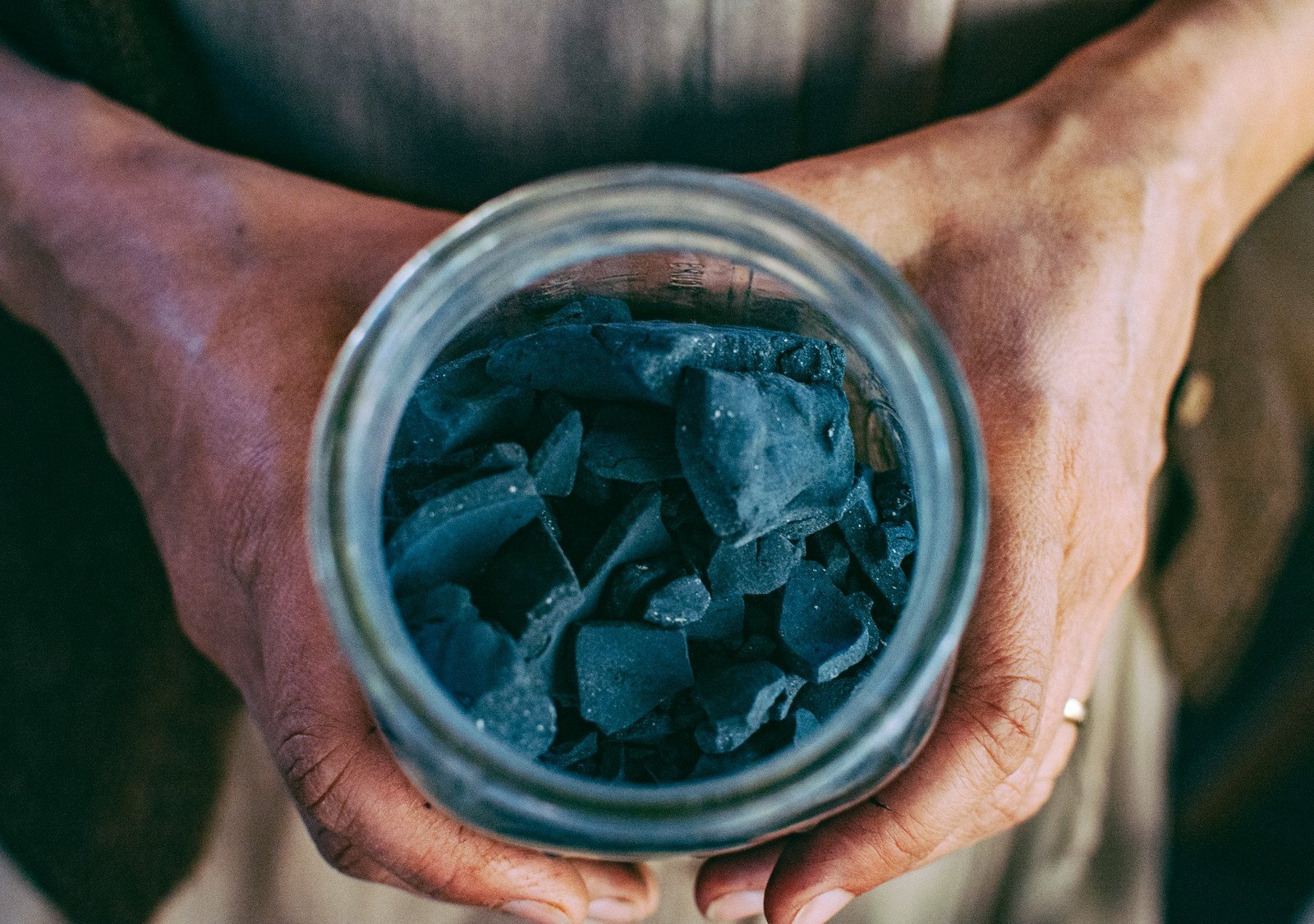Red Twig Farm
Written and Photographed for Fibershed
It all started with a gift: fifty tiny seedlings, exchanged from one woman’s hands to another. The seedlings were Polygonum tinctorium, whose body is made of glassy green almond-shaped leaves, tiny pink flower buds, and whose dye creates the infamous world-renowned deep blue our eyes love to drink and our hands love to touch. The little indigo plants were given to Gina Smith of Red Twig Farm, who by that point had already spent many years tilling and filling her 5.5 acre homestead with fruit trees, vegetables gardens, a chicken coop, a goat pen, and a greenhouse full of rotating crops such as luscious green peppers. When the indigo seedlings came in the Spring of 2015, she simply couldn’t resist welcoming them in and doing her best to give them a good home too. Longtime friend and collaborator, Heather Podoll, joined her in raising the indigo.
Heather and Gina met when both their children started the same school fourteen years ago. Their friendship grew by way of their children and also by their common love for plants. “We are plants people”, says Gina, “and the community is a big piece of what we like about doing this work.” Nestled at the foot of Mount Barnabe in the San Geronimo Valley, there are several friends that come, mostly women “who love to be in the garden, eat from the garden, and get their hands dirty.” Heather started coming over not only for the good company but for the longer hours of sunlight that Gina’s farm receives in comparison to where Heather lives and gardens on the opposite, shadier side of the valley. Gina explains their shared feeling that “when you’re doing this type of work with others, it is really when it is the most joyful and the most fulfilling.”
To their joy and surprise, the indigo grew well at Red Twig Farm. Following traditional fermentation practices Heather and Gina successfully started making rich indigo dye. Currently they care-take a healthy and vibrant indigo vat that lives in an insulated wooden box and is warmed by a space heater. The addition of the indigo plants has opened the door for further experiments with other dye plants. For Gina this is “just another added layer” to her work, as she describes how “the plants yield these colors that are predictable and yet also not, just like everything else that nature offers us.” Since the indigo arrived, Heather and Gina have welcomed and expanded the gardens to now grow more dye plants such as marigold, cota, and the black walnuts from the trees on the property.
Heather and Gina have also found their love for gathering native and local dye plants they find growing wild in the valley. “I love how by using the plants for dying it creates a deeper relationship with them,” Heather describes. “It was such a revelation to go on a hike and see the coffeeberry, the toyon, the madrone — I knew what those plants were before but then [after dying with them] they had this depth of a friendship where you know each other a little bit better.
It is in this “depth of a friendship,” and in these relationships of plant, place, and people that is what inspire Heather and Gina to share what they have learned. Through Red Twig Farm they teach natural plant dye workshops and lessons, offered in the spirit of inviting others to experience the “opportunity to have a deeper connection with the land.” They are also currently developing their product line of locally dyed products made with local fibers.
Heather explains, “the fiber you are using, when you really get to know it, creates more connection in this world. That is why I am so grateful to the network of Fibershed.” Gina echoes the same sentiment, “yes [this type of work] creates more connection, which I think is what we really need in this world more than ever.” Just as the gift of seedlings were given to them, this gift of connection could be the greatest gift of all.
Stay tuned for Red Twig Farm’s schedule of workshops as well as their soon to be released line of naturally dyed products, at http://www.redtwigfarm.net/.



